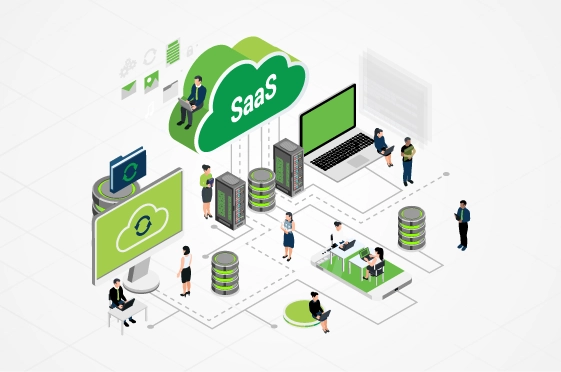
What is SaaS? How Does It Work?
SaaS, which stands for Software as a Service, is an increasingly popular business model that has been growing in popularity since the early 2000s. It's a model of software delivery where users access cloud-based applications over the internet on a subscription basis rather than purchasing and installing the software themselves.
READ MORE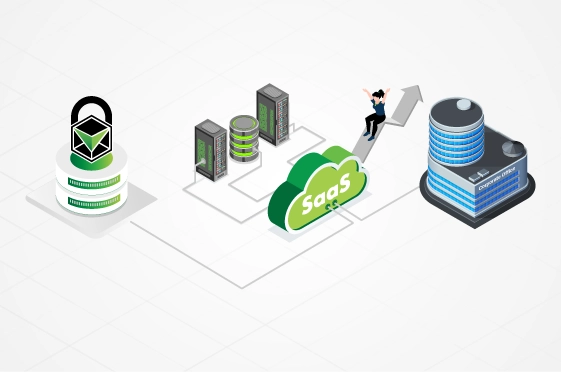
What Is SaaS Security? Why Is SaaS Security Important For Businesses?
As more and more businesses switch to cloud-based Software as a Service (SaaS) applications, it is important for organisations to be aware of the security risks associated with them. SaaS security is the process of safeguarding access to these cloud-based applications and protecting the data stored in them. In this blog post, we will explore what SaaS security is, why it's important for businesses, and how they can ensure their SaaS applications are secure.
READ MORE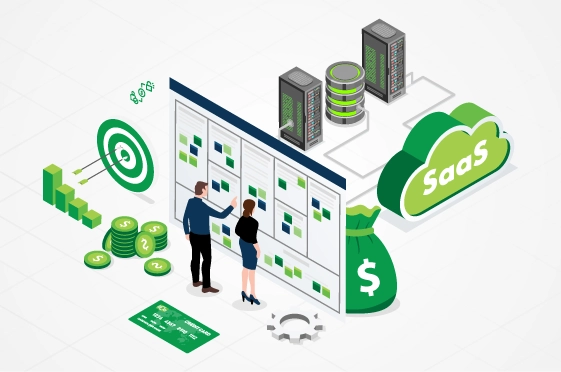
What Are The Different Types Of Saas Business Models?
Software as a Service (SaaS) is becoming increasingly popular in today’s tech-driven world. Businesses of all sizes are taking advantage of this innovative model, but with so many different types, it can be hard to decide which is suitable for your company. This blog post will explore the various SaaS business models and give you an overview of their features and benefits. We will also discuss the challenges associated with each type and how you can overcome them to make the most out of your SaaS venture. Read on to learn more about building the perfect SaaS business model for your needs!
READ MORE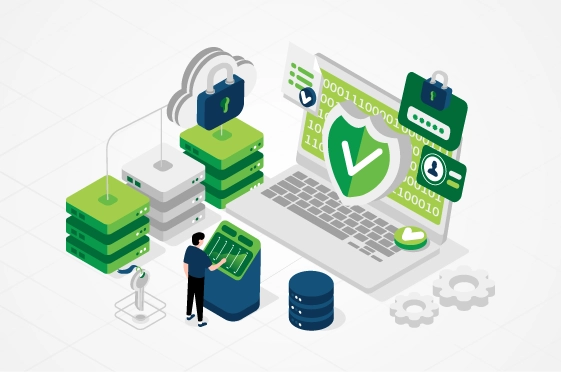
Blockchain technology to improve cybersecurity across sectors
Non-linear connections define our world in the age of hyperconnectivity. Concerns about security and privacy are among the most pressing issues in today's world. Hacking has become more sophisticated and complex, while security features have typically lagged behind. However, due to its impenetrable chain structure, blockchain technology has the potential to improve cybersecurity across industries.
READ MORE
How Can Marketing Agencies Get Benefit From Blockchain?
With its array of benefits, blockchain technology has gone beyond just being used in the financial sector, and is now being increasingly demanded by the digital marketing sector, including data privacy protection, increased transparency in marketing, and generating genuine leads. Let's explore blockchain technology's potential to change your marketing strategy and gain benefits.
READ MORE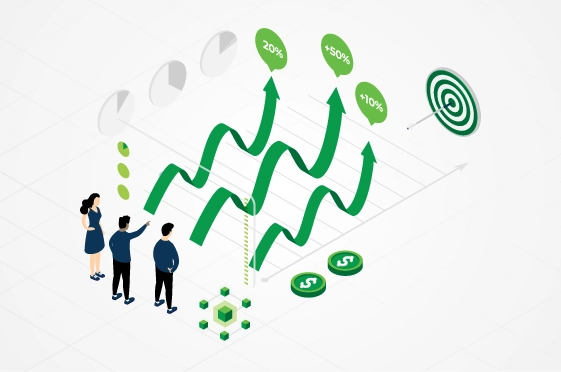
Unmissable Blockchain Predictions This New Year
Blockchain technology and cryptocurrencies are interconnected, with blockchain serving as a peer-to-peer financial transaction model. A more in-depth examination of blockchain predictions and relevant industry trends in 2023 is required to determine how blockchain technology and its applications will develop over time.
READ MORE
Benefits of SaaS models
Today, The Software as a Service (SaaS) business model is an attractive alternative to traditional software installation in multiple organisations across various global sectors. Things have definitely changed about the concept and meaning of Software as a service (SaaS) since it was first used in 2005. Understanding this aspect of a growing market is critical to ensuring business growth, particularly at a time when cloud computing is expanding at a faster rate than ever before.
READ MORE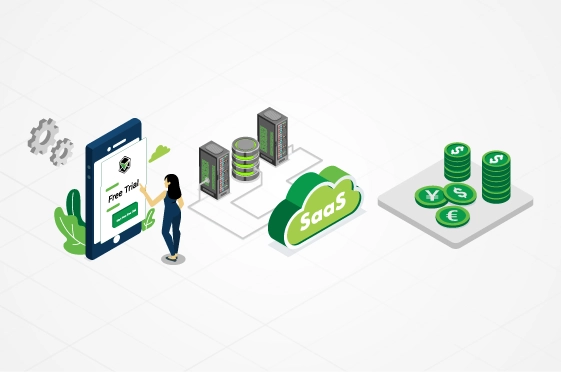
Why SaaS is important for your business?
oftware as a Service (SaaS) is a software delivery model where a software application is hosted and distributed over the internet by a third party. Software is accessible through a web browser or a mobile app, and customers pay a subscription fee to use the SaaS model. Businesses benefit from using the SaaS model because it is the service provider's responsibility to maintain and update the software. So as a client, you will always enjoy the latest version of the software with all the upgradation.
READ MORE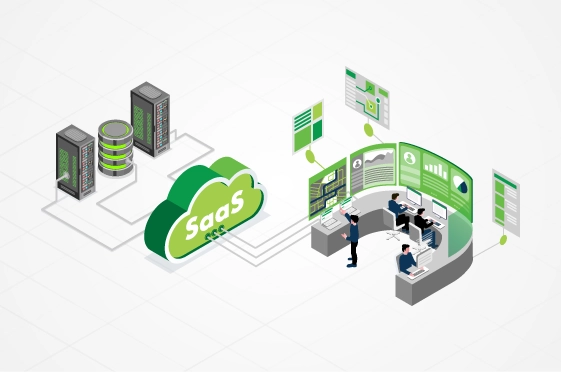
Top Reasons Why Saas Is The Future
SaaS is extremely popular among business models because of its simplicity, security, accessibility, and huge connectivity. This software distribution model is very reliable and provides cost-effective solutions to businesses. Today SaaS is available for a bunch of business applications, namely financial management, customer relationship management, enterprise resource planning, data & analytics, editing, streaming, etc.
READ MORE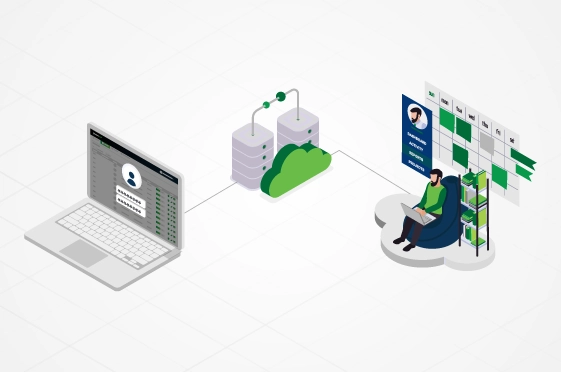
Logging in and out now easy with VeriDoc HR
As more and more businesses are going digital, it's no surprise that time tracking has also been digitised. Digital timesheets have revolutionised the way companies manage their employees' work hours. Instead of manually tracking hours, digital timesheets allow employees to log in and out with just a few clicks. In this blog, we will explore how digital timesheets have made time tracking easy and efficient. Digital Timesheets Have Made Time Tracking So Easy Remote Accessibility: With digital timesheets, employees can access their time records from anywhere with an internet connection. This is particularly useful for companies with remote workers or employees who need to work from home. They can simply log in to their digital timesheet and track their work hours, eliminating the need for physical timesheets. Real-time Tracking: Digital timesheets enable real-time tracking of work hours. This means that employers can see their employees' work hours as they log them, allowing them to m
READ MORE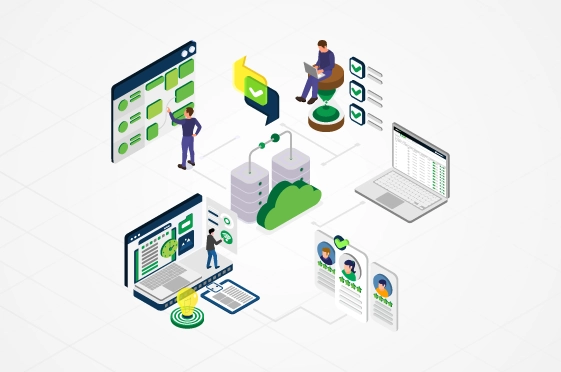
What are digital timesheets? What is its purpose?
In today's fast-paced business environment, tracking time and managing projects have become more challenging. However, digital timesheets have become a popular solution for businesses to track their employees' time and ensure timely project completion. In this blog, we will discuss what digital timesheets are and their purpose. What Are Digital Timesheets? A digital timesheet is an online tool that allows employees to track their work hours, including the start and end times, breaks, and overtime. It is an electronic form of traditional paper-based timesheets that makes the time-tracking process faster, more efficient, and less prone to errors. Digital timesheets can be accessed and managed from any device with an internet connection. The Purpose of Digital Timesheets Time Tracking: The primary purpose of digital timesheets is to track the time spent by employees on different tasks, projects, and clients. It helps to measure the productivity and efficiency of the team and improve th
READ MORE
Difference between digital timesheets and paper timesheets
In today's fast-paced world, time management is of utmost importance. Proper time management not only helps increase productivity but also ensures that deadlines are met. Keeping track of employee work hours is a crucial aspect of managing time. In the past, paper timesheets were the norm for tracking employee hours. However, with the advancement of technology, digital timesheets have become increasingly popular. In this blog, we will discuss the difference between digital timesheets and paper timesheets. Difference between Digital Timesheets And Paper Timesheets: Accessibility: With paper timesheets, employees need to be physically present in the office to submit their hours. On the other hand, digital timesheets can be accessed from anywhere with an internet connection. Accuracy: Paper timesheets are prone to errors and omissions, such as incorrect entries and missed hours. Digital timesheets, however, automatically calculate employee hours and eliminate the need for manual calcul
READ MORE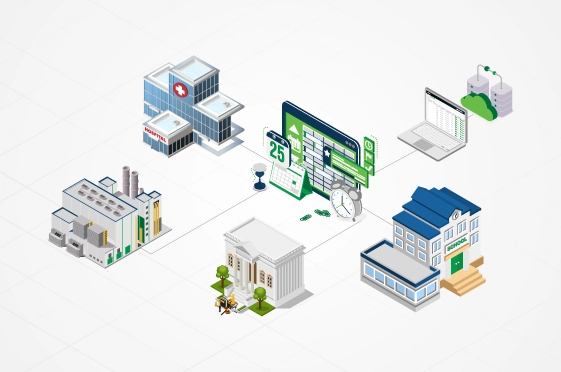
Different use cases of timesheets
Keeping track of employee hours and managing payroll can be a time-consuming and tedious task. Traditional paper timesheets can be a hassle to manage and are prone to errors. Digital timesheets have become increasingly popular as they make the process more efficient and accurate. In this blog, we will explore different use cases of digital timesheets in various sectors. Use Cases of Digital Timesheets Healthcare Sector: Healthcare professionals work long hours, and keeping track of their hours is crucial for payroll and billing purposes. Digital timesheets make it easy to monitor their hours, overtime, and other essential data, ensuring accurate billing and payroll. Education Sector: Educational institutions can use digital timesheets to keep track of the time worked by faculty and staff. This information is used to calculate payroll and track vacation and sick days. Manufacturing Sector: In the manufacturing sector, digital timesheets can be used to track the hours worked by empl
READ MORE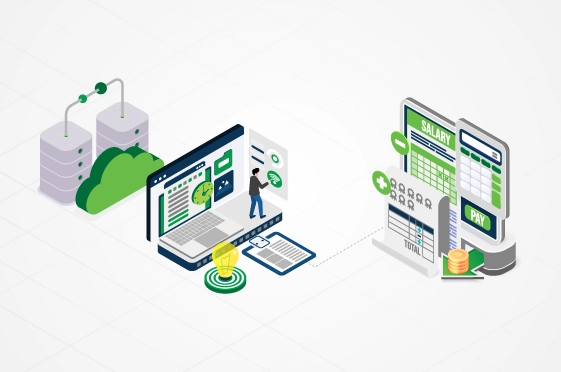
Use of timesheets in payroll management
In payroll management, it is important to track employee hours accurately worked to ensure proper payment of wages. This is where timesheets come in handy. A timesheet is a record of the time an employee spends working on specific tasks or projects. The use of timesheets in payroll management has become increasingly popular, as it simplifies the process of tracking employee hours and helps organisations manage their payroll efficiently. Use Of Timesheets In Payroll Management There are several benefits of using timesheets in payroll management. Here are 7-8 points highlighting their use: Accurate tracking of employee hours: Timesheets enable employers to track the exact hours worked by each employee, including overtime and breaks. This ensures accurate payment of wages and helps employers avoid any legal disputes related to unpaid wages. Cost-effective: By tracking employee hours accurately, timesheets can help organisations save money by reducing overpayment of wages or penalties
READ MORE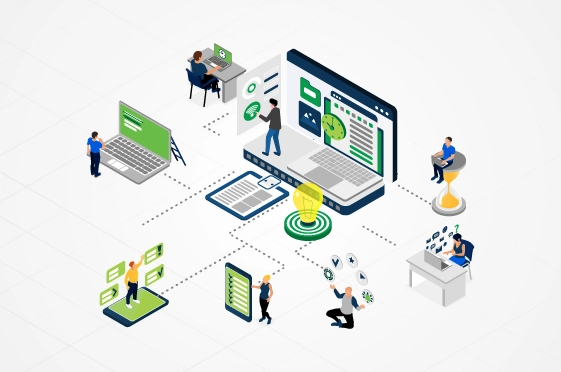
Use of timesheets in time management
Time management is an essential aspect of everyone's personal and professional life. With the fast-paced life, it becomes increasingly difficult to manage and prioritise tasks, leading to missed deadlines and incomplete work. In this scenario, timesheets prove to be a valuable tool for keeping track of the time spent on tasks and managing it effectively. Use Of Timesheets In Time Management Timesheets are a time tracking tool that records the time spent on tasks and activities. Here are some ways in which timesheets can be used in time management: Task Prioritization: Timesheets can help individuals and teams prioritise tasks based on the time required to complete them. This allows them to allocate their time efficiently and focus on high-priority tasks. Time Allocation: With timesheets, individuals and teams can allocate their time for specific tasks or projects. This helps to ensure enough time for each task and project, and it helps avoid delays and missed deadlines. Improved
READ MORE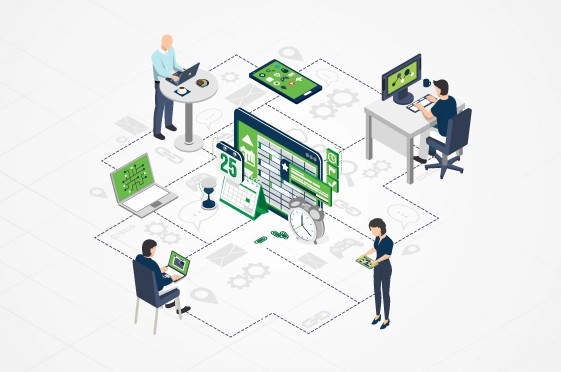
Use of timesheets for freelancers
As a freelancer, tracking your time is critical to ensure you get paid for your work. The use of timesheets can be an effective tool to help you track the time you spend on different tasks and projects. In this blog, we will explore seven uses of timesheets for freelancers. 7 Uses Of Use Of Timesheets For Freelancers: Time Tracking: Timesheets can help you track the time you spend on each task, project, or client. By tracking your time, you can accurately bill clients, analyse your productivity, and adjust your schedule as needed. Knowing how much time you spend on different tasks can help you prioritise and manage your workload more effectively. Billing Clients: Timesheets provide a record of your time on a project, making it easier to create accurate invoices for your clients. When billing your clients, you can use the information from your timesheet to ensure that you are charging the correct amount for your services. Analysing Your Productivity: By tracking your time using
READ MORE
Use of timesheets for task management
Task management is the process of organising and prioritising tasks in order to accomplish them efficiently and effectively. One of the key tools used in task management is the timesheet. A timesheet is a document used to record the amount of time spent on a particular task or project. Individuals and organisations use timesheets to track their time, measure productivity, and plan their workloads. This blog will discuss the 7 uses of timesheets for task management. 7 Uses Of Timesheets For Task Management Time Tracking: The primary use of timesheets is to track the time spent on each task. By tracking time, you can see how much time you are spending on each task and adjust your schedule accordingly. This helps you to prioritise your tasks and manage your time more effectively. Billing and Invoicing: Timesheets are also used for billing and invoicing purposes. If you are working on a project for a client, you can use timesheets to record the time spent on each task and then bill th
READ MORE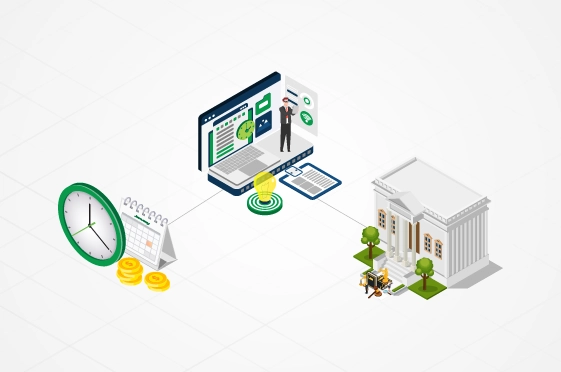
Use of timesheets for law offices
Lawyers and law firms deal with complex and time-consuming legal matters; their time is valuable. Accurately tracking time spent on each case or client is essential for law offices to ensure they are billing clients correctly, managing their workload efficiently, and meeting deadlines. Timesheets are an indispensable tool for lawyers and law firms to track their time and manage their operations effectively. Different Uses of Timesheets for Law Offices Here are some of how law offices can make the best use of timesheets: Billing Clients: One of the primary uses of timesheets for law offices is to bill clients for their services. Timesheets help lawyers to accurately track their time spent on each client or case, including meetings, phone calls, research, and drafting documents. This information is then used to generate client invoices, ensuring they are billed correctly and promptly. Project Management: Law offices deal with multiple cases and clients simultaneously. Timesheets hel
READ MORE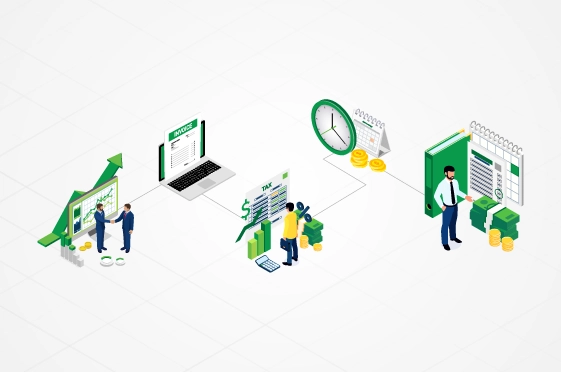
Use of timesheets for accountants
In the world of accounting, time is money, and keeping track of it is crucial. Time tracking enables accountants to accurately bill their clients, track project progress, and determine profitability. This is where timesheets come into play. Timesheets are a valuable tool that helps accountants keep track of their work hours, project timelines, and client billing. This blog will discuss the eight uses of timesheets for accountants. 8 Uses of Timesheets for Accountants Let's explore the eight uses of timesheets for accountants and discuss how they can help improve productivity, efficiency, and profitability. Accurate Client Billing Timesheets allow accountants to track the exact amount of time spent on each client. This ensures that clients are accurately billed for the services they receive, increasing client satisfaction and reducing disputes. Project Management By tracking time spent on each project, timesheets help accountants manage project timelines, ensuring that deadlines
READ MORE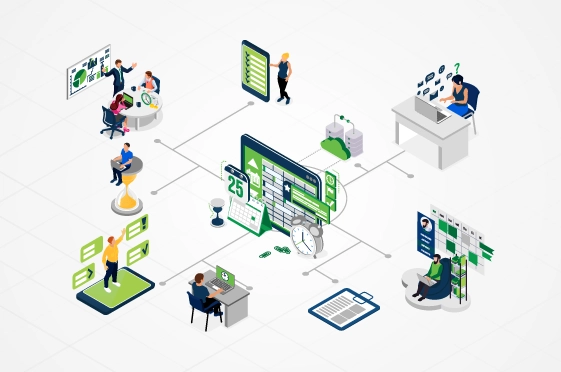
Benefits of digital timesheets in today's workforce
Today's workforce has seen significant changes due to technological advancements. One such change is the use of digital timesheets. Digital timesheets are electronic versions of traditional paper-based timesheets used to record employees' working hours. With the help of digital timesheets, companies can efficiently manage employee work hours, payroll, and overtime. Top 10 Benefits of Digital Timesheets in Today's Workforce Reduced Errors: Digital timesheets eliminate human error, which is common in manual processes. Digital timesheets automatically calculate the total number of hours worked, making it easier to avoid mistakes in the payroll. Easy Accessibility: Digital timesheets can be accessed from anywhere, at any time. This makes it easier for remote employees to record their working hours and for managers to approve their timesheets. Real-time Tracking: Digital timesheets provide real-time tracking of employee work hours, which helps managers monitor employee productivity an
READ MORE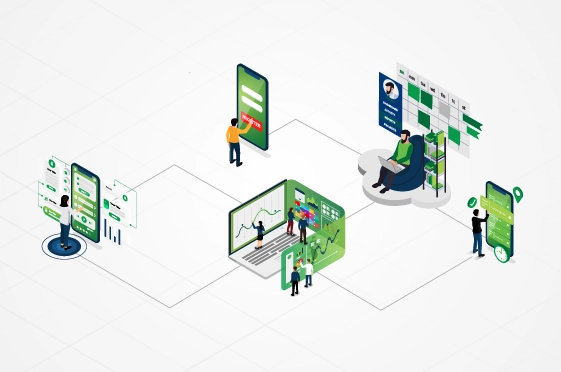
What features to look out for in digital timesheets?
Gone are the days when timesheets were managed manually on paper. In today's digital age, digital timesheets have become the norm for most companies. Digital timesheets have a plethora of features that make managing employee work hours, time off requests, and payroll easier and more efficient. However, not all digital timesheets are created equal. In this blog post, we will discuss the top 10 features to look out for in digital timesheets. Top 10 Features To Look Out For In Digital Timesheets: Customisation: One of the most important features to look out for in digital timesheets is customisation. Every business has unique needs, and a good digital timesheet should be customisable to meet those needs. User-friendly Interface: A user-friendly interface is crucial for any digital timesheet. The interface should be easy to navigate and understand, even for non-technical users. Mobile Accessibility: In today's remote work environment, having a digital timesheet that is accessible via
READ MORE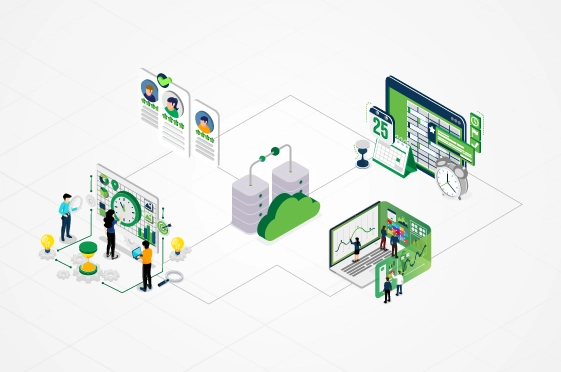
Use of timesheets in projects management
Project management involves handling multiple tasks simultaneously to achieve the desired results within the deadline. Managing time effectively is one of the essential elements of project management. Time tracking plays a vital role in tracking the project's progress and ensuring that it is moving in the right direction. A timesheet is a tool that helps to keep track of the time spent on each project or task. This blog will discuss the importance of timesheets in project management and how they can help you achieve your goals. 8 Uses Of Timesheets In Projects Management Accurate Time Management: The timesheet helps project managers to track the actual time spent on each task. It helps to analyse the time spent on each activity and ensure that the project is completed within the deadline. Billing and Invoicing: Timesheets help to generate accurate bills and invoices for the clients based on the time spent on each task. It helps to avoid any discrepancies and ensures timely payment.
READ MORE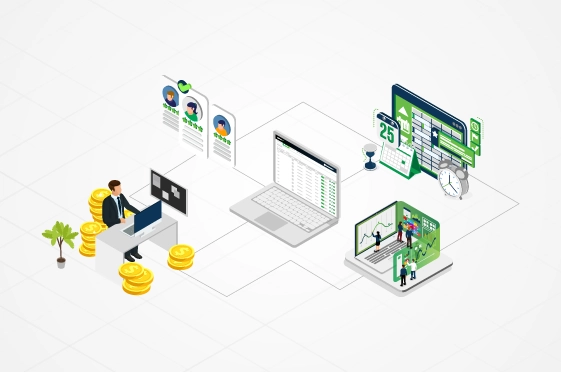
Save Time And Money Using Timesheets
Time is a precious commodity, and as the saying goes, "time is money." In today's fast-paced business world, making the most of every moment is essential. One way to do this is by using timesheets. Timesheets are a tool that helps track the time spent on various tasks, making it easier to manage time and resources effectively. This blog post will explore how timesheets can save you time and money. 8 Ways Timesheets Can Save You Money Accurate billing: If you're a freelancer or a consultant, timesheets are essential for accurately billing your clients. By tracking the time you spend on each project, you can bill your clients for the exact amount of time you've worked, reducing the risk of undercharging or overcharging. Improved productivity: Timesheets help you identify how you're spending your time, allowing you to identify areas where you're wasting time. By eliminating time-wasting activities, you can improve your productivity and get more done in less time. Better resource allo
READ MORE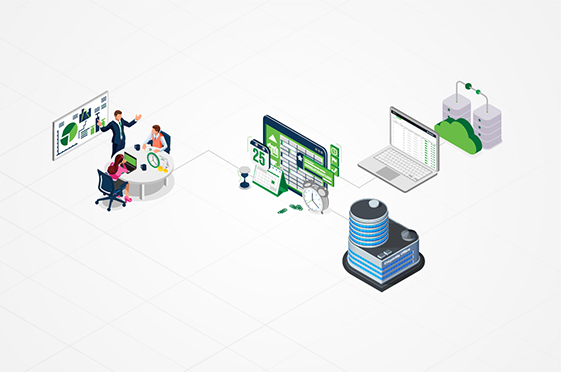
Importance of digital timesheets for SMEs
The use of digital timesheets is becoming increasingly popular in small and medium-sized enterprises (SMEs) due to the numerous benefits they offer. In the past, companies had to rely on manual methods for tracking employee hours and attendance, which could be time-consuming and prone to errors. However, digital timesheets have revolutionised the process by making them faster, more accurate, and easier to manage. In this blog post, we will discuss the importance of digital timesheets for SMEs and the advantages they provide. Importance Of Digital Timesheets For SMEs Accurate and Timely Record-Keeping: Digital timesheets ensure that accurate records of employee hours worked and leave taken are kept in real time, allowing managers to monitor and track employee attendance, tardiness, and absenteeism more effectively. Increased Productivity: With digital timesheets, employees can quickly and easily log their hours worked, and managers can review and approve timesheets remotely, eliminat
READ MORE